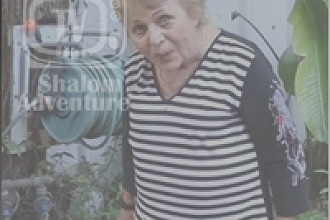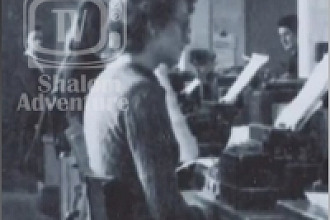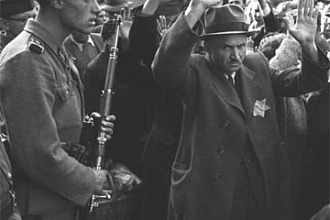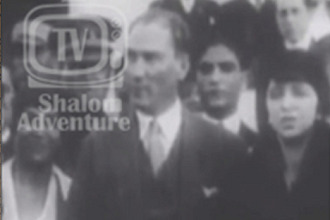Pinchas Gutter sat in an armchair surrounded by hundreds of LED lights.
A survivor of the Buchenwald camp during the Holocaust, Gutter has long been involved with the USC Shoah Foundation: The Institute for Visual History and Education, sharing his testimony for the organization's database of 52,000 survivors, and telling his story in classrooms worldwide.
Now, as part of the "New Dimensions in Testimony" project, Gutter is the first Holocaust survivor to be recorded in 3-D using the "light stage" at the USC Institute for Creative Technologies. The initiative aims to preserve the valuable experience of engagement and interaction, allowing people to ask questions and have a dialogue with photo-real, three-dimensional survivors of the Holocaust even when they are not able to be physically present.
Stephen Smith, executive director of the USC Shoah Foundation, presented the prototype of virtual Pinchas Gutter to a packed room of reporters as the kick-off presentation to "GLIMPSE: A Digital Technology Showcase" at USC on Jan. 29.
As the wall-sized Gutter sat back in his armchair, now backed by an image of a library of books, Smith began the conversation: "Hello, Pinchas. I'd like to ask you a few questions."
The virtual Gutter leaned forward and responded, in a rich voice that still bore traces of Poland: "You may ask me anything you like."
After a few general questions, Smith then turned to the audience. While the "New Dimensions" prototype of Gutter is still in early stages, the conversation is directed by the interests of the person engaging with the virtual human. Using natural language technology, Gutter is able to respond to conversational variations in how questions are asked, with relevant responses.
To the audience at the USC event, Smith presented three possible areas for further conversation with Gutter — separation from parents, resistance to the Nazis and God. Members of the project will again interview survivors who are already in the USC Shoah Foundation Visual History Archive and use a new set of questions, mirroring issues that are often raised in real-life classroom conversations.
At the event, when the audience member chose to learn more about Gutter's separation from his parents, Smith asked Gutter if he had a chance to say goodbye.
Gutter began to tell his story, about the chaos during the deportation from the Warsaw ghetto to Majdanek, undressing in a crowded room and about the last time he saw his father, walking in front of him with his hands above his head. The virtual Gutter raised his hands above his head to show the motion.
Gutter's entire family was murdered the day they arrived at the camp. He remembered seeing his twin sister's braid as she turned the corner in front of him to enter the showers. This, Smith said, highlighted an important part of the project's ongoing work to make sure that if follow-up questions focused on a specific detail that they would also elicit relevant responses.
Smith then invited the audience to interact with the virtual Pinchas Gutter during the afternoon demonstration session and to have their own dialogue with Gutter, keeping the memory of the golden braid — and the lesson it carries — alive far into the future.
Originally from here
Submiited to Shalom Adventure by: Jeffrey Alan


























